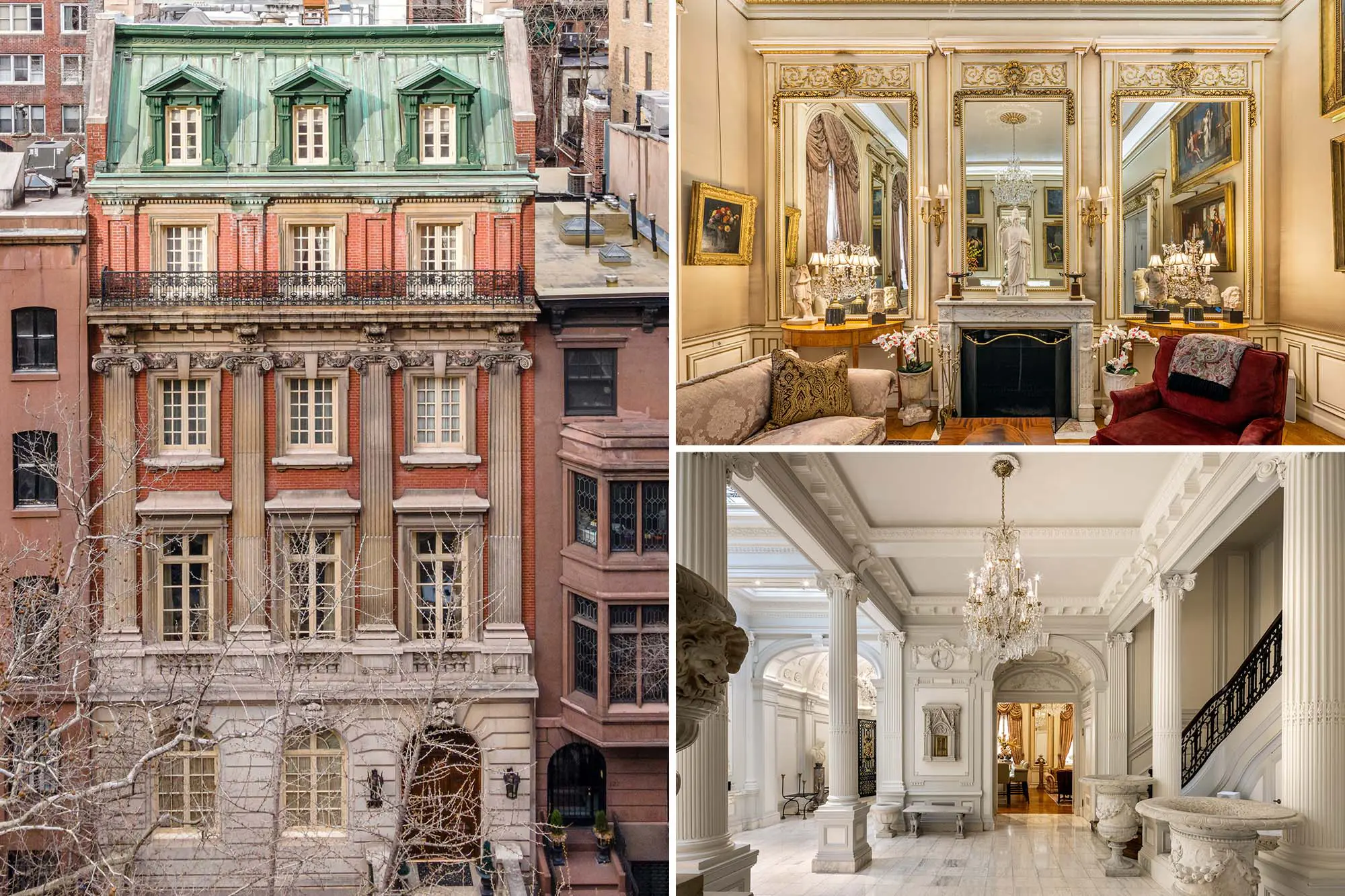Welcome to the glamorous world of the Gilded Age! Picture homes adorned with fancy fabrics, shiny gold frames, and the beauty of the natural world woven into every detail. We’re about to uncover the secrets behind these lavish spaces, from their majestic architecture down to the smallest design elements. Get ready for a journey into a time of opulence and extravagance that continues to influence our homes today.
Gilded Age Interior Design: A Fusion of Extravagance and Elegance
Imagine stepping back in time to the late 19th and early 20th centuries. Grand mansions overflow with luxurious details – that’s the magic of Gilded Age interior design. It was an era defined by embracing extravagance and showcasing the booming American Dream.
Picture European elegance infused with a distinctly American spirit. Ornate Rococo flourishes combined with the grandeur of Renaissance architecture created a melting pot of influences, resulting in a unique and undeniably opulent style.
And opulent it was! Rich, heavy fabrics like velvet, silk, and brocade draped every surface. Walls were adorned with intricate moldings, ceilings soared with elaborate coffers, and massive, sparkling chandeliers illuminated rooms bathed in luxury. Every detail contributed to a sense of awe and grandeur.
At the forefront of this design movement were the Herter Brothers, American cabinetmakers who became synonymous with lavish living. Their furniture, characterized by intricate carvings, exotic wood veneers, and breathtaking details, was a must-have for anyone who had “made it” during the Gilded Age.
But it wasn’t all heavy fabrics and glittering gold. Nature played a starring role too. Stunning botanical motifs were woven into wallpapers, textiles, and decor, bringing the outdoors in and celebrating the natural world. Elaborate floral arrangements and exotic plants graced every room, adding a touch of elegance and sophistication.
The Gilded Age’s influence on design didn’t disappear with the turn of the century. Its lavish mark can be seen in later movements like Art Nouveau and Art Deco. Even today, the opulence of this era continues to inspire designers and homeowners alike, reminding us of a time when extravagance reigned supreme.
What Defined the Gilded Age Aesthetic?
The Gilded Age, a time of unprecedented economic growth in America, saw a surge in lavish interior design. Furniture boasted intricate carvings and moldings, luxurious fabrics like velvet, silk, and damask draped every surface, and designers embraced bold colors and patterns. Owning exquisitely crafted furniture and antique pieces became a status symbol, a testament to one’s refined taste and appreciation for the finer things in life.
Key Elements of Gilded Age Interior Design:
- A Transatlantic Blend: European elegance met American boldness, resulting in a distinctive aesthetic.
- Opulence Reigns Supreme: Rich fabrics, intricately carved moldings, and luxurious furniture defined the era.
- Craftsmanship Takes Center Stage: Every piece, from furniture to the smallest decorative accessory, was crafted with exceptional skill and attention to detail.
- Nature’s Influence: Botanical motifs and floral arrangements brought the beauty of the outdoors in.
- A Lasting Legacy: The Gilded Age continues to inspire design trends even today.
Want to learn more? Check out this resource:
The Gilded Age: A Guide to Its Architecture and Interior Design
The Enduring Influence of the Herter Brothers on Interior Design
The Herter Brothers didn’t just decorate homes; they transformed them. Their secret? They considered every single detail, creating a sense of total harmony in each room. Walls, furniture, even the smallest decorative touches – everything worked together seamlessly.
Their eclectic style drew inspiration from various periods and cultures. A touch of Renaissance elegance here, a dash of Japanese minimalism there, all blended together with their own creative flair. This fearless eclecticism made their work unique and appealing to the wealthy trendsetters of the time.
The Herters were obsessed with quality craftsmanship, using rare and exotic woods, intricate hand-carvings, and luxurious fabrics. Every piece of furniture they created was a work of art, oozing with luxury and sophistication.
Their influence didn’t stop with their own company. They set the standard for Gilded Age interior design, shaping the way people perceived and experienced interior spaces. Even today, their work is highly sought after, inspiring modern designers to capture that same timeless elegance and bespoke craftsmanship.
How Did Nature Inspire Gilded Age Interiors?
Even amidst the undeniable opulence of Gilded Age mansions, nature played a significant role. It wasn’t just about showcasing wealth; it was about bringing the beauty and tranquility of the outdoors in.
Natural materials were everywhere: polished wood floors, gleaming marble fireplaces, and sturdy stone walls. Skilled craftsmen carved intricate designs of leaves, flowers, and animals into furniture, walls, and ceilings, bringing a touch of the wild into these elegant spaces.
Wallpapers featured delicate ivy patterns, vibrant floral arrangements, and playful birds, seamlessly blurring the lines between the indoors and the outdoors. Botanical themes extended to textiles, decorative objects, and more.
Architects and designers, obsessed with natural light, installed massive windows and expansive skylights that flooded rooms with sunshine. Open floor plans flowed effortlessly from one space to the next, making even the grandest mansion feel surprisingly livable.
Incorporating nature into design during the Gilded Age wasn’t just a trend; it reflected a growing understanding that our surroundings impact our well-being. Using natural materials and incorporating botanical motifs fostered a sense of harmony between the people who lived there and the natural world.
This idea of bringing the outdoors in is just as relevant today. Modern designers continue to draw inspiration from the Gilded Age, incorporating natural elements like wood, stone, and plants into contemporary homes. Those elegant homes from a bygone era still teach us valuable lessons about creating spaces that are both stunningly beautiful and undeniably comfortable.
Key Points of Gilded Age Interior Design:
- European Elegance Meets American Spirit: Blends ornate Rococo flourishes with Renaissance grandeur.
- Opulence Abounds: Rich fabrics (velvet, silk, brocade), intricate moldings, coffered ceilings, and sparkling chandeliers create a sense of luxury.
- Herter Brothers Influence: Skilled cabinetmakers known for lavish furniture with intricate carvings and exotic veneers set the standard for the era.
- Nature as Inspiration: Botanical motifs are incorporated into wallpapers, textiles, and decor, complemented by elaborate floral arrangements and exotic plants.
- Lasting Legacy: Influences later design movements like Art Nouveau and Art Deco, and continues to inspire designers and homeowners today.
Bringing the Gilded Age into Your Home:
- Embrace Ornate Details and Adornments: Incorporate intricate carvings, moldings, and decorative accents.
- Incorporate Luxurious Fabrics and Textures: Utilize opulent fabrics like silk, velvet, and damask.
- Use Color and Patterns Boldly: Don’t shy away from vibrant hues and elaborate patterns.
- Invest in High-Quality Craftsmanship and Antiques: Seek out well-crafted pieces and antiques.
- Consider the Use of Wall Coverings: Explore ornate wall coverings like embossed wallpapers or painted murals.
- Incorporate Architectural Elements: Consider incorporating architectural elements like arches, columns, and moldings.
- Focus on Functionality: Strike a balance between aesthetics and practicality.
The Gilded Age offers endless inspiration for those seeking to infuse their homes with a touch of opulence and timeless elegance. By understanding the key elements of this lavish style and incorporating them thoughtfully, you can create a space that is both visually stunning and undeniably inviting.
- Grass Forever in Livermore: Your Guide to Artificial Turf - April 22, 2025
- German Roaches vs. American Roaches: Key Differences and Control - April 22, 2025
- 150+ Flowers That Start With S: A Comprehensive Guide - April 22, 2025










